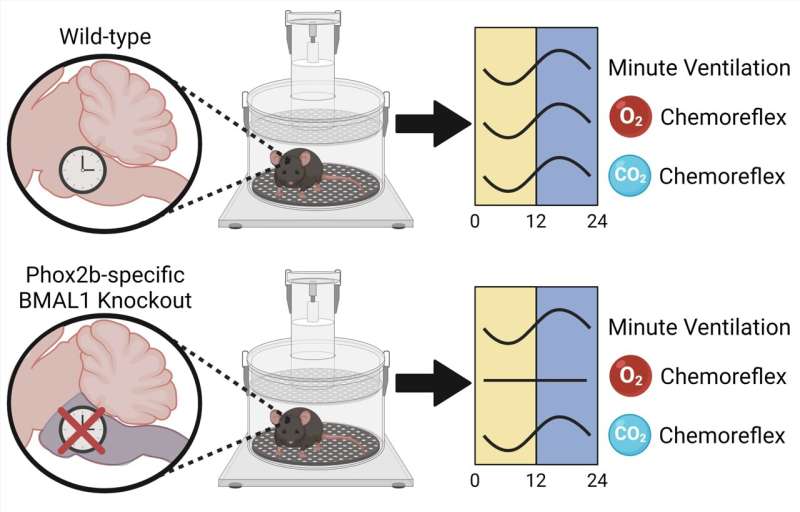Graphical Abstract. Credit: Function (2023). DOI: 10.1093/function/zqad023
New research suggests that the molecular clock, derived from time-keeping genes in our cells, enables us to modify how we breathe over the day. Researchers from Marquette University in Wisconsin determined that mice without a functional molecular clock do not have a daily variation in respiratory chemoreflex. This means that these mice breathe at the same rate in response to low oxygen or high carbon dioxide regardless of the time of day. This lack of variation is abnormal. The findings are published in a new study in the journal Function.
The researchers also found that there's a specific collection of cells, mostly in the brain, where the clock is needed to guide a daily variation in the oxygen chemoreflex. Neuroscientists define these cells by their ability to express the gene Phox2b.
Respiratory chemoreflex relates to how people breathe in response to low oxygen or high carbon dioxide levels. For optimal health, humans and animals must increase their breathing when the brain detects either of these situations. An altered internal clock (circadian rhythm) could lead to respiratory diseases with worsened symptoms depending on the time of day.
"In the future, our research may improve human health by increasing our understanding of how respiratory disease and the circadian clock are related," said Deanna Arble, Ph.D., senior author of this study. "This information may help doctors predict respiratory symptoms before they occur and could prevent the development of some respiratory diseases by ensuring properly functioning clocks," she said.
The findings are published in the journal Function.
More information: Aaron A Jones et al, The Molecular Circadian Clock of Phox2b-expressing Cells Drives Daily Variation of The Hypoxic but Not Hypercapnic Ventilatory Response in Mice, Function (2023). DOI: 10.1093/function/zqad023
Provided by American Physiological Society
























